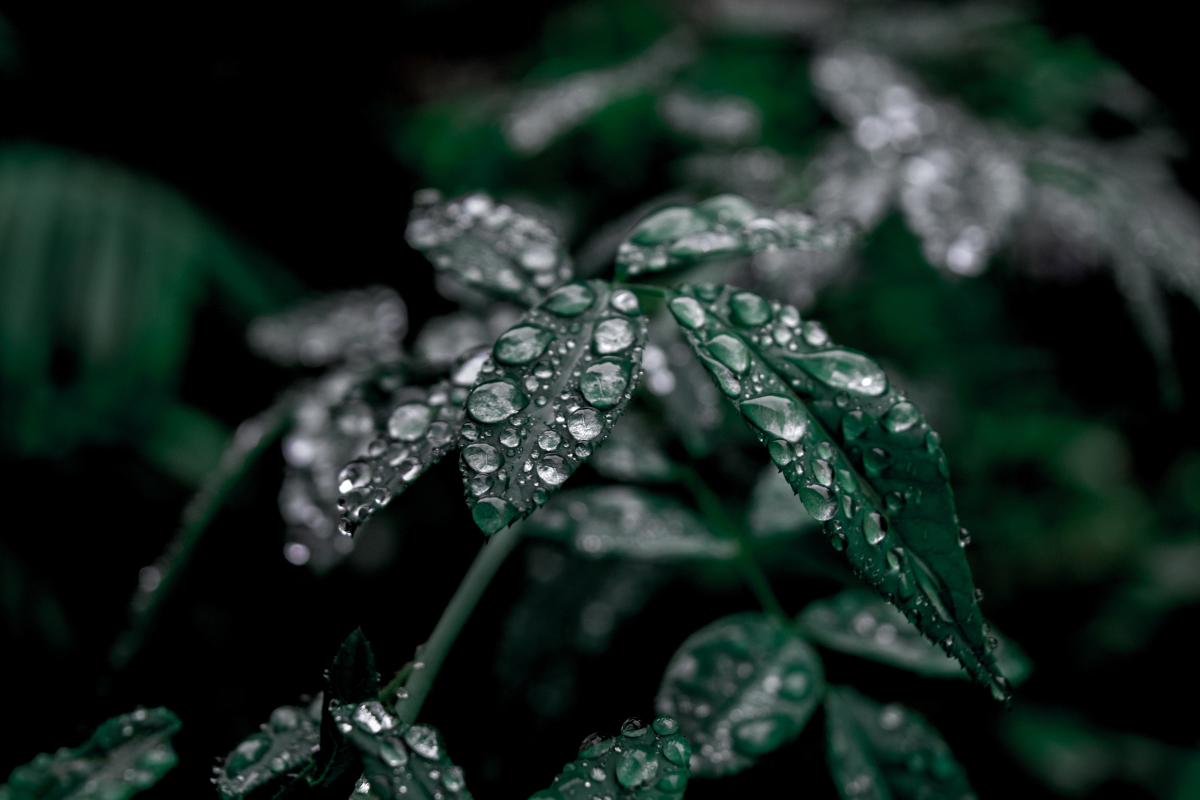Do you ever feel like the air in your home is thick and stale? Or maybe you struggle with mold growth and excess moisture in certain areas of your house.
The solution to these problems may be as simple as adding some greenery to your living space.
Not only do plants add life and beauty to a room, but certain types can also act as natural dehumidifiers, helping to purify the air and regulate humidity levels.
In this post, we’ll introduce you to eight indoor plants that absorb humidity and will help you breathe easy at home while also bringing a touch of nature indoors.
Table of Contents
Though it is essential to have moisture in your environment, having too much of it can make the environment easy for fungal growth, mildew, and other diseases.
If you live in a moist and humid environment, then it is quite common for you to use a dehumidifier but how about using a natural dehumidifier that can absorb too much moisture and humidity in your surroundings?
Here is a list of 8 best natural dehumidifiers
1. Peace Lilly
The peace lily is a tropical plant that originates from Central and South America. It gets its name from its white, lily-like flowers that bloom throughout the year.
They are good adapters for humid conditions and don’t require frequent watering. They are also one of the best sound absorbing plants indoors.
It is a tropical plant and is one of the best indoor plants to grow. It is good at absorbing moisture through its leaves. Because of its bright white flowers, it is also used for decorative purposes.
Though it absorbs humidity, during summers it is essential to water them enough. Leaves turning brown is a sign of the plant’s craving for water.

The flowers are beautiful, but they’re also very fragrant, so if you’re sensitive to strong smells, you might want to choose another plant for your dehumidifying needs.
The peace lily is not only good at reducing humidity levels in your home, but it’s also great at purifying the air.
According to a study published in the research gate, the peace lily was found to be effective at removing common volatile organic compounds (VOCs) from the air, including formaldehyde and benzene.
If you’re looking for an attractive way to improve the air quality in your home and reduce humidity levels at the same time, the peace lily is a great option.
2. Dracaena
Dracaena is a type of indoor plant that can help to naturally dehumidify your home.
These plants are known for their ability to absorb excess moisture from the air, which can help to keep your home feeling comfortable and dry.

Dracaena plants are easy to care for and can thrive in most indoor environments.
When choosing a dracaena plant for your home, be sure to select one that is appropriate for the size and humidity level of your space.
3. Snake plant
If you’re looking for an indoor plant that can help to purify the air and act as a natural dehumidifier, then a snake plant is a great option.

Snake plants are known for their ability to absorb toxins and pollutants from the air, making them ideal for use in homes or office spaces.
Additionally, snake plants can help to regulate humidity levels, making them ideal for use in areas with high humidity.
4. Chinese Evergreen
Native to tropical regions of Asia, the Chinese evergreen is tolerant of high humidity and can actually help to reduce the amount of moisture in the air.

This common houseplant is known for its ability to thrive in low-light conditions, making it a great option for rooms that don’t get a lot of natural sunlight.
So if you’re looking for a plant that will not only survive in your dimly lit living room but also help to keep your home feeling comfortably dry, the Chinese evergreen is a great choice.
5. Boston Ferns
They love moist, shady environments without much sunlight.
But it does require some amount of filtered indirect lighting every day for certain hours. They can be hung on pots and are also good sound absorbers.
If you’re looking for an indoor plant that can help to purify the air and reduce humidity, the Boston Fern is a great option.

This type of fern is known for its ability to thrive in humid environments, making it ideal for use in bathrooms and kitchens.
Be sure to keep an eye on the leaves of your plant and remove any that begin to turn brown or yellow. This might indicate a lack of required water.
6. Mint
This is one of the easy-to-grow plants that can adapt itself to a wide range of watering and lighting conditions.
They absorb a good amount of moisture in their surroundings and also make the area feel aromatically good.
7. Bamboo palms
Bamboo Palm is an excellent indoor plant for natural dehumidification. It is a member of the palm family and is native to tropical regions of Africa and Asia.
Palsm in general are good at absorbing moisture. Especially the areca and bamboo palms do a really good job and are comfortable enough to be placed indoors.

In natural conditions, bamboo palms can grow to a height of 3 feet, but indoors their height is controlled. They love humid and shady areas.
The plant has long, slender leaves and is known for its ability to tolerate low light conditions and can even prosper in rooms with little or no natural light.
These plants also have a high tolerance for humidity, making them ideal for homes in humid climates.
8. Spider plant
These plants are also known as ribbon plants. With its long leaves, it can easily absorb the humidity from the air.
It not just absorbs the moisture in your surroundings but also helps in purifying the air in your environment, especially formaldehyde.
It has long and thin leaves with a bright green and white or yellow mix.

They thrive well on indirect sunlight and can grow well without much watering since it absorbs the humidity and uses it for their growth.
They are able to absorb up to 10 times their weight in water, making them extremely effective at reducing indoor humidity levels.
Spider plants are also very easy to care for, and can thrive in a wide range of indoor environments.
9. Orchids
Unlike other plants in the list that absorb their nutrients from the soil, the orchids usually get their nutrients from the surrounding air.

So, naturally, they are good at absorbing the humidity around them.
10. Tillandsia
This plant absorbs the moisture and water in the environment to hydrate itself.

Out of everything on the list, this plant is the one with the greatest dehumidification capacity.
It also requires some fertilization to supply it with the required nutrients.
11. Calathea
They naturally need a humid environment to thrive. They can survive in low light conditions and without much watering.

Their leaves are attractive and colorful with amazing patterns over.
12. English Ivy
They are cute climbers and are usually hanged on houses in pots.

The plant is native to the European Atlantic coast which is usually humid.
Since they naturally require a humid condition to thrive, they can be placed in humid places like bathrooms, kitchens, etc..,
Conclusion
Indoor plants are a great way to improve the air quality in your home and act as natural dehumidifiers. Not only do they look beautiful, but they help you breathe easier at home.
From easy-to-maintain ferns and ivy to more exotic varieties like Chinese evergreen or snake plants, there is an indoor plant out there that will suit your needs perfectly.
Whether you’re looking for an attractive addition to brighten up your living space or want to maintain healthier levels of humidity indoors, these natural dehumidifiers are sure to give you the results you desire.



